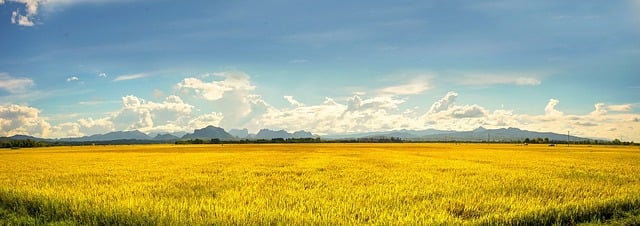-
PEZA chief says using 12 million hectares of agricultural land and rich fishing grounds into ecozones will help the Philippines achieve food sufficiency
-
Charito Plaza says her agency can help turn public lands into viable ecozones
-
PEZA signed a memorandum of understanding with the DENR on May 31 to set up more ecozones in the regions
The government should look into using the country’s 12 million hectares of farmlands and those for agro-fisheries as special economic zones for agriculture and fisheries to attain food sufficiency.
This was suggested on June 23 by Philippine Economic Zone Authority Director General Charito Plaza, who said her agency can play a role in such an undertaking.
“It’s high time to utilize the around 12 million hectares of agricultural lands and the country’s fishing grounds into Special Economic zones on Agriculture and Aquamarine (sic),” Plaza said in a statement.
“Under my leadership, PEZA will contribute our own way through our special ecozones by transforming public lands into viable agro-industrial and aquamarines that can spur production and food security not just for export but for domestic supply as well.”
Plaza said for years there had been talk of plans to make the country food sufficient, yet, it remains an imports and consumption-dependent economy.
She said the government should harness the country’s millions of hectares of idle fertile land and rich natural resources to achieve a self-reliant, self-sustaining and resource-generating economy.
PEZA signed a memorandum of understanding with the Department of Environment and Natural Resources (DENR) on May 31 with a view to creating more ecozones in the countryside.
“Under the MOU, PEZA and DENR agree to pursue the establishment of special ecozones in potential areas within the jurisdiction of the DENR that are suitable for development as agro-industrial, agro-forestry, mineral processing, and eco-tourism.
“We hope to truly implement these partnerships in the coming years under the administration of President-elect Bongbong Marcos Jr.,” said Plaza.
Ferdinand Marcos Jr. will take over the reins of government from President Rodrigo Duterte, whose term ends on June 30. Marcos has also decided to head the Department of Agriculture.
On piloting the ecozone development program in Region XIII, Plaza said PEZA and DENR have agreed that, compared with other regions, CARAGA has the greatest potential to contribute to economic development, being the timber and mining capital of the country.
“We aim to restore the once major industry of wood and put in order the utilization of raw minerals being processed into many other products in CARAGA, which has the biggest timberland and mining lands,” Plaza said.
PEZA and DENR have successfully identified seven tracts of land in CARAGA that are viable for ecozone development.
Four of the proposed special economic zones (SEZ) will be in Ausan del Norte, and one each is being proposed for Agusan del Sur, Surigao del Norte, and Surigao del Sur.
Once proclaimed, these SEZs will be in addition to the 23 operating agro-industrial ecozones in PEZA, four of which are in Luzon, five in the Visayas, and 13 in Mindanao.
Plaza envisions ecozones as a tool to eradicate the import and consumption dependence of the country.
“In planning for our country and our people’s needs, we must first assess how we can properly utilize both our human and natural resources, the Philippines’ biggest advantages, to attain total development,” Plaza said.
“And this is through the creation of different types of economic zones that will attract targeted, specialized, strategic and big-ticket investments and spur countryside development.”
The PEZA-DENR partnership is in line with the goals of PEZA’s Transformation Roadmap to achieve environment-friendly industrialization through the creation of green, healthy, sustainable, and smart ecozones.





